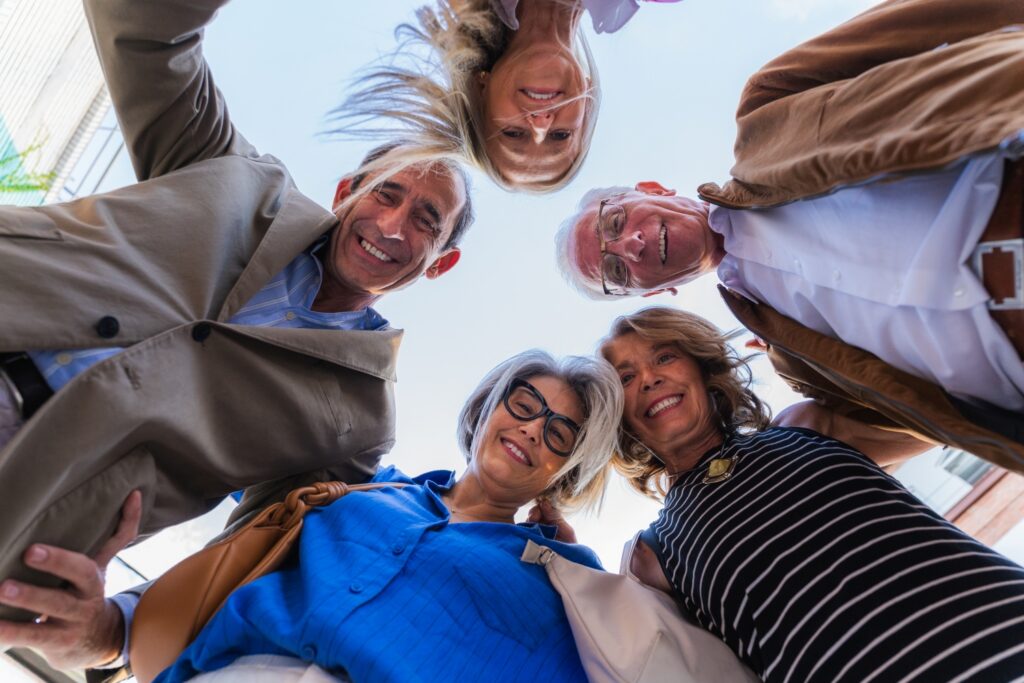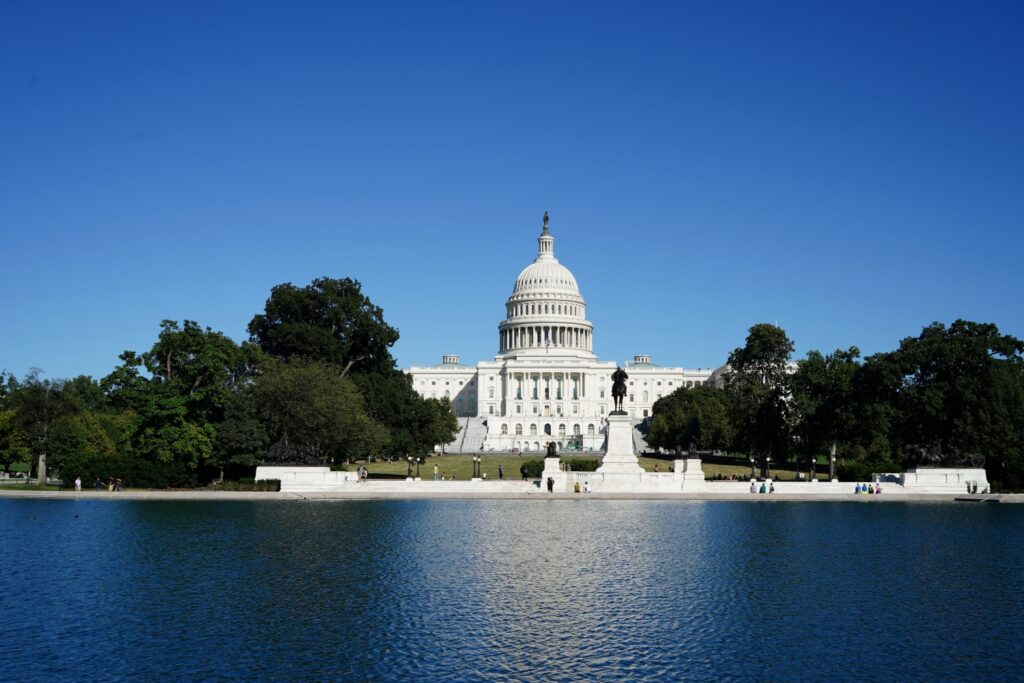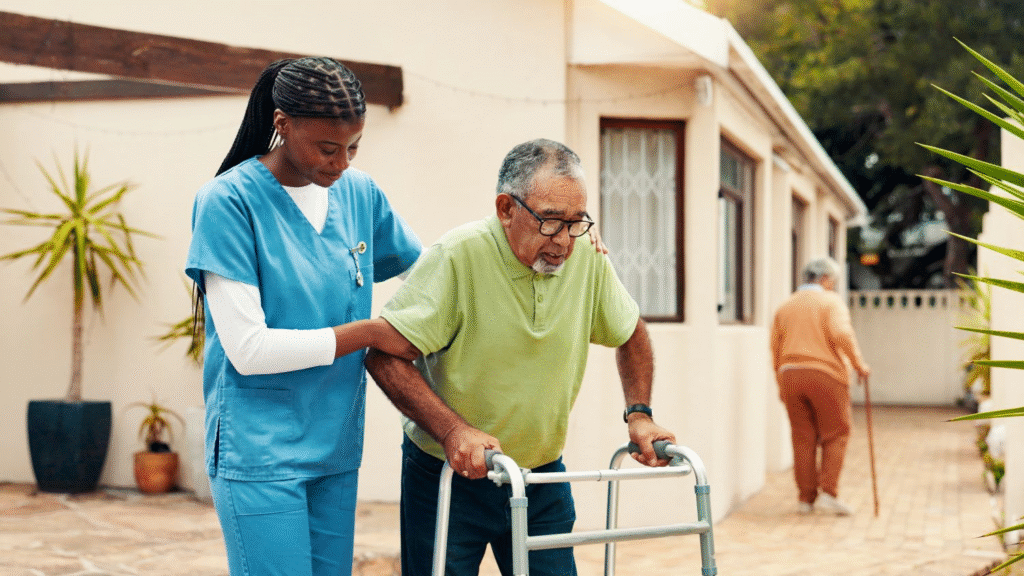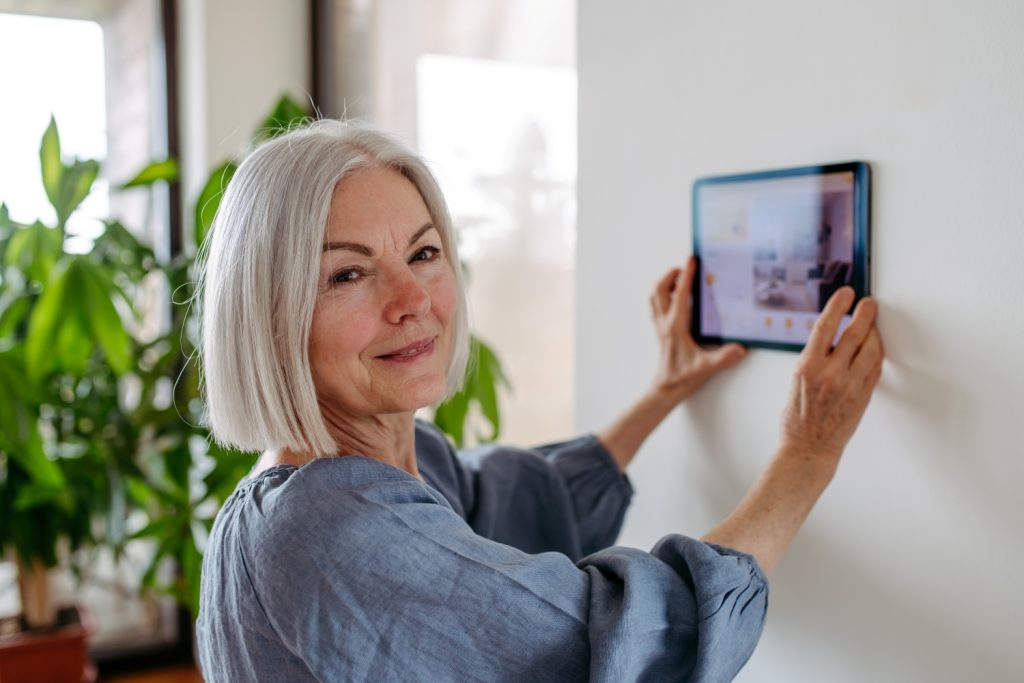Abstract
The success of Age-Friendly Ecosystems depends upon the participation and buy-in of sectors and stakeholders that serve and affect older adults. The disability community is a critical partner that largely has not, to date, been included in age-friendly efforts. The significant percentage of older adults aging with and into disability, the intersections between ageism and ableism, and the common priorities of older adults and people with disabilities—including home- and community-based services, housing, transportation, and family caregiving—create numerous opportunities for robust and productive collaboration as part of Age-Friendly Ecosystems initiatives.
Key Words
aging, disability, age-friendly, advocacy, community living, ageism, ableism
Age-Friendly Ecosystems (AFEs) are critical to advancing opportunities for older adults to age in their communities with health, independence, and inclusion. A centerpiece of AFEs is collaboration across systems and sectors that serve or affect older adults (Currie, 2024). This article focuses on a community that has not historically been a partner in AFE efforts but whose presence is critical: the disability community.
The Intersections of Aging and Disability
Aging and disability intersect in numerous ways. People with disabilities are a substantial part of the older adult population, and their numbers are growing. People can age with or into disability. The nearly 1 in 4 Americans who have a disability will age with their disabilities. In addition, many older adults acquire a disability as they age, such as mobility disabilities, hearing or vision disabilities, or cognitive disabilities like dementia. Between a third and a half of older adults have disabilities—with the percentage increasing as people age. And older adults are the largest sub-population of disabled people worldwide (Administration for Community Living [ACL], 2024a; Gutterman, 2023). As people live longer, and the population of older adults continues to grow significantly, the intersection of aging and disability will become increasingly important.
The aging and disability communities also share goals, many of which are relevant to AFEs. Advocates for older adults and people with disabilities have collaborated on issues like expanding access to the home- and community-based services (HCBS) that help people live in their own homes and communities, supporting family caregivers, and strengthening the direct care workforce that provides older adults and disabled people services and supports. Issues of accessibility are important to both communities, including accessibility of public transportation, sidewalks, and websites. And with older adults and disabled people comprising most of those experiencing or at risk of homelessness (Sloan, 2024; Stevens, 2024), both communities have prioritized advocacy for affordable, accessible housing.
People with disabilities and older adults also face a shared experience of discrimination. Disabled people face ableism—defined as beliefs and practices that devalue and discriminate against people with disabilities based on assumptions that their lives are worth less, they are incapable of contributing, or that they need to be “fixed”—in nearly every aspect of life, from accessing healthcare, to education and employment, to participating in community life.
Both communities are impacted by the direct care workforce crisis, and its high turnover rate due to lack of living wages, benefits, and advancement opportunities.
Older adults face ageism, discrimination, and prejudice based on stereotypes about the capacities of older adults and the belief that aging is to be avoided. As with people with disabilities, ageism can affect older adults across every aspect of their lives (Gutterman, 2023). With so many older adults experiencing disabilities, the intersections of ageism and ableism are just beginning to be discussed and studied. A December 2023 Special Edition of Generations highlighted these intersections.
In ageism and ableism, people often face a combination of individual discrimination and structural discrimination embedded in existing laws, policies, and societal structures (Adams, 2023). This shared experience creates opportunities for the two communities to work together as part of AFE initiatives.
Federal Strategies Recognize the Importance of Collaboration Between Aging and Disability
Recognition of the commonalities between the aging and disability communities has begun to drive federal policies and strategies. Most notably, in 2012, the U.S. Department of Health and Human Services (HHS) created the ACL, combining aging and disability programs from across HHS (and later bringing in programs from other departments) into a single agency focused on a common vision—that all people, regardless of age or disability, can “live with dignity, make their own choices, and participate fully in society” (ACL, 2024b). Having aging and disability programs in a single agency has created opportunities to facilitate collaborations across the aging and disability networks and launch initiatives focused on issues that affect both communities. *
This intersecting focus is reflected in recent regulatory updates. When ACL updated the Older Americans Act (OAA) regulations in 2024 for the first time in more than 30 years, it included provisions to facilitate coordination between aging and disability networks, identified older adults with disabilities as a population of “greatest social need,” and highlighted OAA programs benefitting both populations, such as family caregiver support programs (ACL, 2024c). ACL used a similar approach when it issued the first-ever regulations governing states’ Adult Protective Services (APS) programs, which serve older adults and disabled adults. APS rules include a focus on how APS entities should coordinate with disability networks, particularly the protection and advocacy agencies that have overlapping jurisdiction, and address issues common across the populations, such as overuse of guardianships (ACL, 2024d).
The intersection of ableism and ageism has been incorporated into several recent updates to civil rights regulations by HHS. In May 2024, for the first time in nearly 50 years, HHS’s Office for Civil Rights, in collaboration with ACL, updated regulations implementing Section 504 of the Rehabilitation Act, prohibiting disability discrimination by recipients of federal funding. The rules make it clear that they apply to the significant proportion of older adults who meet the law’s broad definition of disability. These rules expand protections throughout the healthcare system, such as prohibiting the types of discriminatory denials of life-saving treatment that were common during the pandemic, and ensuring that medical equipment, websites, and kiosks are accessible. The new rules establish, consistent with the Americans with Disabilities Act and the Supreme Court’s decision in Olmstead v. L.C., that people have a right to receive services in their own homes and communities instead of being forced into institutional settings like nursing homes, a critical tool to advancing the wishes of most older adults to age in place (Office for Civil Rights, 2024). And recent updates to regulations implementing the anti-discrimination provisions in the Affordable Care Act, Section 1557, provide another important legal tool for the many older adults who face additional barriers due being a person of color, not speaking English as a first language, being LGBTQ+, or being disabled (Office for Civil Rights, 2024).
The combining of aging and disability programs in ACL also has allowed for initiatives focused on large, complex issues affecting both communities. The common need to better support family caregivers—so they can continue to provide the support that allows people with disabilities and older adults to remain in their own homes and communities—was a driving theme in the first-ever National Strategy to Support Family Caregivers, released by ACL in 2022. The National Strategy was developed by 15 federal agencies in collaboration with a council of caregivers, people receiving care, researchers, and advocates, intentionally representing both the aging and disability communities (ACL, 2022).
Both communities also are impacted by the direct care workforce crisis, with a high turnover rate due to a lack of living wages, benefits, and advancement opportunities. (ANCOR, 2024). ACL has launched an initiative—the Direct Care Workforce Strategies Center—to provide technical assistance and facilitate collaboration among states, providers, and aging and disability networks to address this critical issue (ACL, 2025b).
‘Some states have combined their aging and disability programs into a single agency.’
Similarly, older adults and people with disabilities need access to affordable, accessible housing and community-based wraparound services to remain stably housed in the community. The U.S. Department of Housing and Urban Development (HUD) and HHS agencies, led by ACL, launched the Housing and Services Resource Center to provide technical assistance to states and local communities on leveraging resources and building partnerships among housing, homelessness, aging, disability, and healthcare agencies and advocates (ACL, 2025a). Also, during the pandemic, both older adults and disabled people faced barriers in accessing vaccines, leading ACL to launch the Aging and Disability Vaccination Collaborative to provide resources to the aging and disability networks to collaborate in this critical, life-saving work (USAging, 2025).
The intersections and collaborations across aging and disability have expanded beyond topic-specific partnerships to building better partnerships generally. For example, 16 agencies across the federal government, led by ACL, released in Spring 2024 “Aging in the United States: A Strategic Framework for a National Plan on Aging,” building on—and furthering—the momentum of states developing multi-sector plans on aging (Interagency Coordinating Committee for Healthy Aging and Age-Friendly Communities, 2024). Modeling after best practices from states like California that have intentionally included the disability community as a critical partner from the start, the Strategic Framework includes people aging with and into disability as a forethought instead of an afterthought, as has too often been the case.
Likewise, ACL has launched the Bridging Aging and Disability initiative, which supports partnerships between the aging and disability networks at the state level (National Association of Councils on Developmental Disabilities, 2025). The initiative is already having an impact; for example, in Connecticut, the state Council on Developmental Disabilities has become a key partner not only in the work to develop that state’s multisector plan on aging, but also on livable communities and other age-friendly initiatives (see https://ctagewellcollaborative.org/campaign/).
In the past decade, other aging organizations have similarly expanded their aging focus to include people with disabilities, such as USAging (the association of Area Agencies on Aging) and Justice in Aging (a national aging advocacy organization focused on legal and policy advocacy), and some states have combined their aging and disability programs into a single agency, such as Tennessee, Alaska, Nevada, and Kansas. Coalitions of aging and disability advocates have been created at the national and state level to work on these many common issues, such as the Disability and Aging Collaborative, Act on RAISE Campaign, and Care Can’t Wait Coalition.
Areas for Aging and Disability Collaboration in Age-Friendly Ecosystems
So, what does this intersection and growing collaboration between aging and disability mean for the work on age-friendly ecosystems? I believe it means that the disability community must be included as an important partner and focus on these efforts. For each of the AFE sectors, there are significant opportunities for collaboration on shared goals.
Most older adults and people with disabilities want to live in their homes and communities, but they need access to home- and community-based services to do so. Because Medicare and private insurance do not generally cover HCBS, and most people cannot afford to pay for these services out-of-pocket, both older adults and disabled people must rely on Medicaid to access HCBS (Childambaram, 2024). Aging and disability advocates have worked together to expand access to HCBS, championing increased funding to reduce waiting lists for services and to expand programs like Money Follows the Person that help people return to the community from nursing homes, and to fight against cuts to Medicaid. The common priorities of supporting family caregivers and strengthening the direct care workforce and joint efforts on these issues at national and state levels can and should be leveraged to support aging-in-community.
‘The aging and disability networks can and should work together to help public health systems be more inclusive.’
Addressing barriers to access—and discrimination—that older adults and people with disabilities face in healthcare is an area ripe for strengthening partnerships with the healthcare sector. There is no place where the insidious intersection of ageism and ableism rears its head more clearly than in healthcare. The medical model prevalent in the healthcare system is undergirded by stereotypes and bias about the value and quality of the lives of people with disabilities and older adults, as we saw so clearly during the pandemic when healthcare systems denied lifesaving treatment to older adults and disabled people (and very often to people who were both).
But even basic access to healthcare can be challenging for older adults and people with disabilities due to the inability to literally get in the door, on the exam table, or to use an inaccessible medical website or kiosk. Section 504, as well as Section 1557 of the Affordable Care Act, are the strongest tools we have ever had to address the barriers and discrimination faced by these populations. While many older adults do not see themselves as disabled, the vast majority fit easily within Section 504’s definition of disability, and thus under the law’s protections. It is critical that older adults understand their rights—and that aging advocates understand the power of this legal tool—and work together with disability advocates on education of the healthcare sector and, when necessary, enforcement.
The public health sector also provides opportunities for rich partnerships between the aging and disability sectors. The COVID-19 pandemic exemplified what happens when public health systems have neither the expertise nor understanding of the needs of older adults and people with disabilities. Despite the high risk of severe disease and death among older adults and disabled people from COVID-19, most public health systems had not yet engaged in the advanced planning necessary to reach them with vaccines, treatments, personal protective equipment (PPE), and other critical supports. With COVID supplemental funding, ACL was able to provide resources to the aging and disability networks to partner with public health agencies, helping to coordinate education, vaccine access, and distribution of tests and PPE. It is essential that these partnerships are not a one-time event but continue to grow. The aging and disability networks can and should work together to help public health systems be more inclusive and proactive in planning to meet the unique needs of these populations.
The sector that includes Age-Friendly Cities, Communities, and States (discussed in detail in a separate article in this special issue) is in large part working to create livable communities, for which accessibility is critical. Disability laws like the Americans with Disabilities Act can ensure accessibility of programs and activities of state and local government (parks, sidewalks, libraries, and courthouses) and to public places (shops, restaurants, theaters, and hotels). Here again, there is a shared interest between the aging and disability communities. Housing and transportation also are important components of this sector and another area of commonality. As discussed above, increasingly, the aging and disability communities are collaborating on initiatives to expand access to affordable, accessible housing to address homelessness, and the federal government has made available resources to support those state and local collaborations through the Housing and Services Resource Center. Similarly, aging and disability advocates are beginning to work together to expand accessible transportation options, partnerships that also are supported by federal resources including through the Accessible Transportation Resource Center (ACL, 2025a).
The education and workplace sectors also provide opportunities for collaboration. In workplaces, both older workers and those with disabilities often face discrimination, at the intersection of ageism and ableism. Disability rights laws like the ADA can not only educate employers about the value of older workers and those with disabilities but also help them obtain needed accommodations in the workplace. In the context of the domain of Age-Friendly Universities, the goals of accessibility, inclusion, and universities as a community resource can benefit older adults and disabled people.
The promise of AFEs will only be achieved when all key sectors and partners are at the table and engaged in the work, including the disability community. The intersections and common interests between aging and disability are vast, and each community brings expertise and tools that can benefit the other. As communities advance age-friendly initiatives, I encourage them to look around the table and ensure the disability community is represented.
*On March, 27, 2025, HHS announced a major reorganization and termination of its workforce. HHS is dismantling the Administration for Community Living (ACL), spreading its programs across several other agencies, and has terminated nearly half of ACL’s staff. At the time of publication, it is unclear what this means for the future of ACL’s programs that serve more than 10 million older adults, people with disabilities, caregivers, and families across the country. The elimination of ACL makes external collaboration efforts between the aging and disability communities, like those discussed in this article, even more important.
Alison Barkoff, J.D., is the Hirsh Health Law and Policy Associate professor and program director at The George Washington University Milken Institute School of Public Health in Washington, DC. From January 2021 to October 2024, she led the Administration for Community Living in the U.S. Department of Health and Human Services.
Photo credit: Shutterstock/Daniel Megias
References
Adams, M. (2023). The structural roots of ageism and ableism: What it means for LGBTQ+ older adults. Generations, 47(1), 1-10.
Administration for Community Living. (2022). 2022 national strategy to support family caregivers. United States Department of Health and Human Services. https://acl.gov/sites/default/files/RAISE_SGRG/NatlStrategyToSupportFamilyCaregivers-2.pdf
Administration for Community Living. (2024a). 2023 profile of older Americans. United States Department of Health and Human Services. https://acl.gov/sites/default/files/Profile%20of%20OA/ACL_ProfileOlderAmericans2023_508.pdf.
Administration for Community Living. (2024b). About ACL. United States Department of Health and Human Services. https://acl.gov/about-acl
Administration for Community Living (2024c). Final rule: 2024 Update to ACL’s Older Americans Act regulations. United States Department of Health and Human Services. https://acl.gov/sites/default/files/oam/2024/OAA_FinalRuleOverview2024.pdf
Administration for Community Living. (2024d). Final rule: Establishing adult protective services regulations. United States Department of Health and Human Services. https://acl.gov/sites/default/files/2024-05/APS%20Regs%20-%20Long%20Fact%20sheet.pdf
Administration for Community Living. (2025a). Accessible transportation resource center. United States Department of Health and Human Services. https://acl.gov/TransportationCenter
Administration for Community Living. (2025b). Direct care workforce strategies center. United States Department of Health and Human Services. https://acl.gov/DCWcenter
Administration for Community Living. (2025c). Housing and services resource center. United States Department of Health and Human Services. https://acl.gov/HousingAndServices
ANCOR. (2024). The state of American’s direct support workforce crisis 2024. https://www.ancor.org/wp-content/uploads/2024/12/The-State-of-Americas-Direct-Support-Workforce-Crisis-2024.pdf
Chidambaram, C., & Burns, A. (2024, July 8). 10 things about long-term services and supports. KFF. https://www.kff.org/medicaid/issue-brief/10-things-about-long-term-services-and-supports-ltss/
Currie, D. (2024). How to help build age-friendly ecosystems. National Council on Aging. https://www.ncoa.org/article/how-to-help-build-age-friendly-ecosystems/
Gutterman, A. S. (2023). On ableism, ageism, and the intersections between them. Generations, 47(1), 1-7.
Interagency Coordinating Committee on Healthy Aging and Age-Friendly Communities. (2024). Aging in the United States: A strategic framework for a national plan on aging. United States Department of Health and Human Services, Administration for Community Living. https://acl.gov/sites/default/files/ICC-Aging/StrategicFramework-NationalPlanOnAging-2024.pdf
National Association of Councils on Developmental Disabilities. (2025). Bridging aging and disability. https://nacdd.org/bridging-aging-disability/
Office for Civil Rights. (2024). Section 504 of the Rehabilitation Act of 1973 final rule: Section by section fact sheet for recipients of financial assistance from HHS. U.S. Department of Health and Human Services. https://www.hhs.gov/civil-rights/for-individuals/disability/section-504-rehabilitation-act-of-1973/ocr-detailed-504-fact-sheet/index.html
Office for Civil Rights. (2024, April). Section 1557 final rule: Frequently asked questions. U.S. Department of Health and Human Services. https://www.hhs.gov/civil-rights/for-individuals/section-1557/faqs/index.html
Sloan, L. (2024). Priced out: The affordable housing crisis for people with disabilities in 2024. Technical Assistance Collaborative. https://www.tacinc.org/blog/priced-out-the-affordable-housing-crisis-for-people-with-disabilities-in-2024/
Stevens, Y. (2024). Paint by numbers: Older Americans and homelessness. National Alliance to End Homelessness. https://endhomelessness.org/blog/paint-by-numbers-older-americans-and-homelessness/
USAging. (2025). Aging and disability vaccination collaborative. https://www.usaging.org/advc













